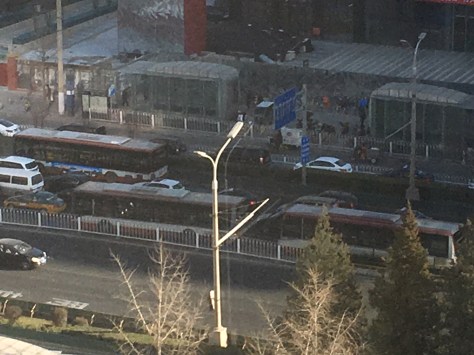
The latest buzz within the Chinese international commercial legal community on Belt & Road related legal developments appears not to have surmounted the Great Wall of the Chinese language. The buzz is that a comprehensive judicial interpretation relating to arbitration is on route to promulgation.
On 4 December the Supreme People’s Court (SPC) issued a news release that its judicial committee had approved a judicial interpretation on judicial review of arbitration in principle, entitled Provisions on Some Issues Related to the Trial of the Judicial Review of Arbitration (Judicial Review of Arbitration Interpretation) (最高人民法院关于审理仲裁司法审查案件若干问题的规定). “Approval in principle” (原则通过) is not mentioned by the SPC’s 2007 regulations on judicial interpretations but is one of the SPC’s long-established practices. It means that the judicial committee has approved it, subject to some “minor” amendments. Minor amendments are more than typographical errors and relate to specific substantive matters. However, the news release did not specify what those “minor” issues were or set a deadline for issuing the interpretation. In December of last year (2016), the SPC’s judicial committee also approved in principle the #4 Company Law interpretation, but that interpretation was not formally issued until August of this year. This observer surmises (without any basis in facts or rumors) that the interpretation will be promulgated before Chinese new year so it can be one of the 2017 accomplishments of the SPC’s #4 Civil Division (but then again, that may be overly optimistic.
The new interpretation will focus on the issues that courts frequently encounter when arbitration-related cases come before them, dealing with gaps in current judicial interpretations (and likely the outdated Arbitration Law, (The Arbitration Law is also the subject of discussions among practitioners, academics, and others.) The interpretation will incorporate new provisions on the types of cases, case acceptance, jurisdiction, procedure, the application of law and other questions. It appears that it will incorporate the provisions described in the Notice concerning some questions regarding the centralized handling of judicial review of arbitration cases (the subject of the last blogpost). It is hoped that the new interpretation will provide for a hearing procedure when cases involving the SPC’s prior approval procedure.
For those not familiar with the intricacies of China’s judicial review of arbitration issues, a 1995 SPC circular sets out a prior approval procedure, requiring local court rulings to refuse to enforce foreign-related/”greater China”/foreign arbitration awards to be submitted for eventual review by the SPC. It is currently an internal administrative type procedure, with no explicit option of a hearing.
The SPC announcement described the drafting of the Judicial Review of Arbitration Interpretation as having begun in 2016. This blog reported in late 2014 that Judge Luo Dongchuan, then head of the SPC’s #4 Civil Division, mentioned that a new judicial interpretation on the judicial review of arbitration-related issues will go into the Court’s judicial interpretation drafting plan in 2015 and that the SPC intends to reform jurisdiction in judicial review of arbitration issues, to consolidate them in specialized courts.
A follow up post will describe the latest buzz on the Belt & Road international commercial tribunal.
_______________________________
If you like this blogpost, please join the East Asian Legal Studies Center of Harvard Law School in supporting the Supreme People’s Court Monitor.

You must be logged in to post a comment.